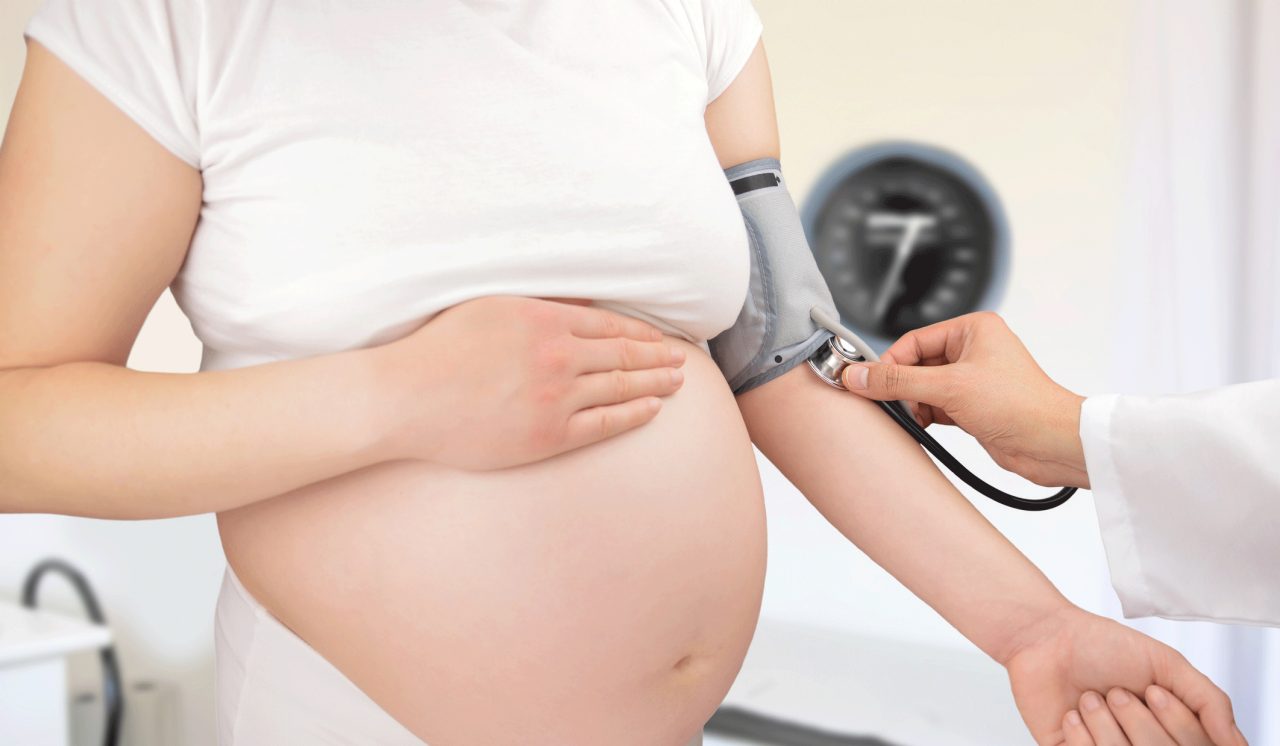What Is Preeclampsia?

Screening expectant moms for potentially dangerous preeclampsia is important. This type of high blood pressure can develop during pregnancy or after childbirth.
There are many reasons why you should keep your prenatal medical appointments. Yur doctor will check to make sure you and your baby are doing well and screen for any problems that might develop.
One potentially serious complication, which puts you both at risk, is preeclampsia, a type of high blood pressure.
High blood pressure, also called hypertension, is a common health problem. Nearly 120 million Americans have hypertension, according to the Centers for Disease Control and Prevention (CDC). The condition affects both men and women.
YOU MIGHT ALSO LIKE: Our Pregnancy Week by Week section
Pregnant women can have hypertension for many reasons. Some already have high blood pressure before their pregnancy. Others may only develop high blood pressure while they are expecting, with their blood pressure often returning to normal after they give birth, a condition known as gestational hypertension.
Although preeclampsia is also a pregnancy-associated hypertension condition, it is a particularly dangerous form of high blood pressure for both an expectant mom and her unborn baby.
What is preeclampsia?
Several factors distinguish preeclampsia from other forms of hypertension. It typically arises after the 20th week of pregnancy or after you deliver (postpartum preeclampsia). It is a serious blood pressure disorder that can affect and even damage other organs in your body, according to the American College of Obstetricians and Gynecologists (ACOG).
Preeclampsia occurs in about 5 to 7 percent of U.S. pregnancies, the National Institutes of Health notes. Although the exact cause of the condition isn’t known, researchers have identified risk factors.
Having a sister or mother who experienced preeclampsia, being African American, and being older than 35 when you are pregnant place you at moderate risk. Obesity and in vitro fertilization can also raise your odds of developing preeclampsia.
Factors that place you at highest risk for preeclampsia include:
- Having the condition during a past pregnancy
- Being pregnant with twins or more babies
- Chronic high blood pressure
- Kidney disease
- Type 1 or type 2 diabetes
- An autoimmune condition such as lupus
You are diagnosed with preeclampsia when you have hypertension and signs your body’s normal regulatory systems are showing signs of damage. One sign is an abnormal amount of protein in your urine (proteinuria). Sudden weight gain and swelling in your face and hands often occurs, too.
If preeclampsia is worsening, other signs doctors call severe features can appear. For example, blood tests may reveal a low number of platelets — blood cells your body needs to produce clots to stop bleeding.
If hypertension causes blood vessel damage, abnormal liver and kidney function can occur, as well as changes in vision, fluid in your lungs, and difficulty breathing. Other severe features include upper abdominal pain, severe headaches, and extremely high blood pressure readings, ACOG explains.
Preeclampsia needs medical care
You should report any potential symptoms of preeclampsia to your doctor immediately. Blood pressure readings, lab tests, a review of your symptoms, and a physical exam are used to make the diagnosis.
If you have preeclampsia, it’s crucial to follow all medical instructions and to understand the condition can impact not only your health but also your baby’s.
The high blood pressure experienced with preeclampsia reduces the blood supply to your unborn baby, which may restrict oxygen and nutrients. If you have preeclampsia, your baby may need to be delivered before your full term. Infants born very early are at risk of long-term health complications and even death.
Moms-to-be who have uncontrolled preeclampsia may progress to a more severe condition called eclampsia, which can cause seizures and coma. HELLP syndrome (hemolysis, elevated liver enzymes, and low platelet count) is another potential complication. Marked by damaged red blood cells, blood clotting impairment, and potential internal bleeding, HELLP syndrome is a life-threatening medical emergency.
Preeclampsia treatment
Screening for preeclampsia and quick medical care if you develop it can keep you and your baby as safe as possible.
You may receive treatment for mild preeclampsia without severe features either in the hospital or at home — if your obstetrician-gynecologist or other medical professional closely monitors you.
At home, you’ll need to take your blood pressure regularly and see your doctor or other healthcare professional once or twice a week. You’ll also need to keep track of your baby’s movements with a daily kick count.
Once you’ve reached the 37th week of your pregnancy, depending on your overall situation, your doctor may recommend an early delivery. If tests show that your baby is in potential jeopardy, an earlier delivery may be necessary.
If you develop preeclampsia with severe features, you will usually be treated in the hospital, where you and your baby will be monitored around the clock. You may receive corticosteroid drugs to help your unborn baby’s lungs mature. You will likely take medications to help reduce your blood pressure and prevent seizures.
If your condition is stable and your pregnancy is fewer than 34 weeks along, it may be possible to wait to deliver your baby to avoid a very preterm birth. If your condition or that of your baby’s worsens, an immediate delivery will be necessary, according to the CDC.
Updated:
August 10, 2023
Reviewed By:
Janet O’Dell, RN